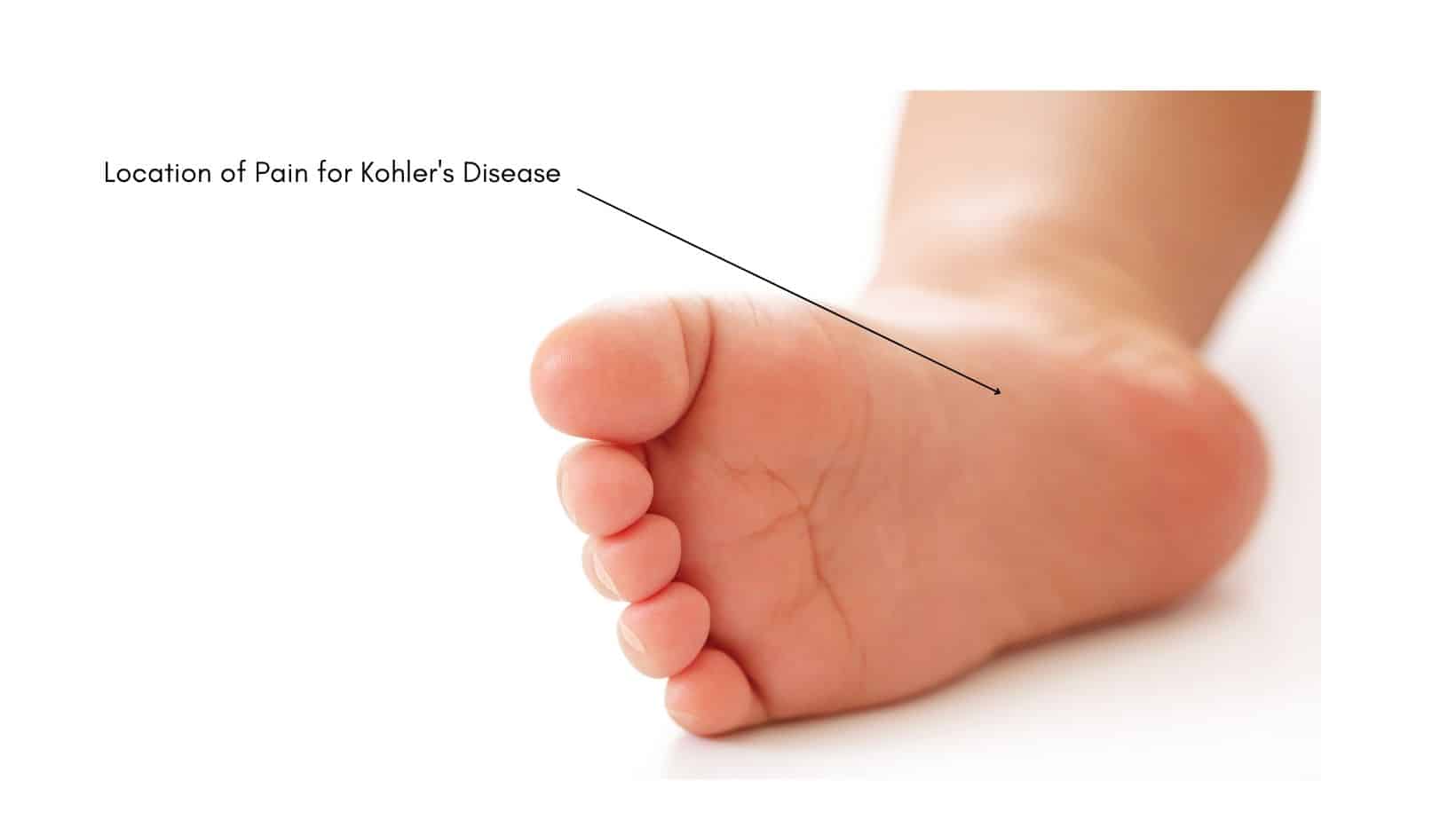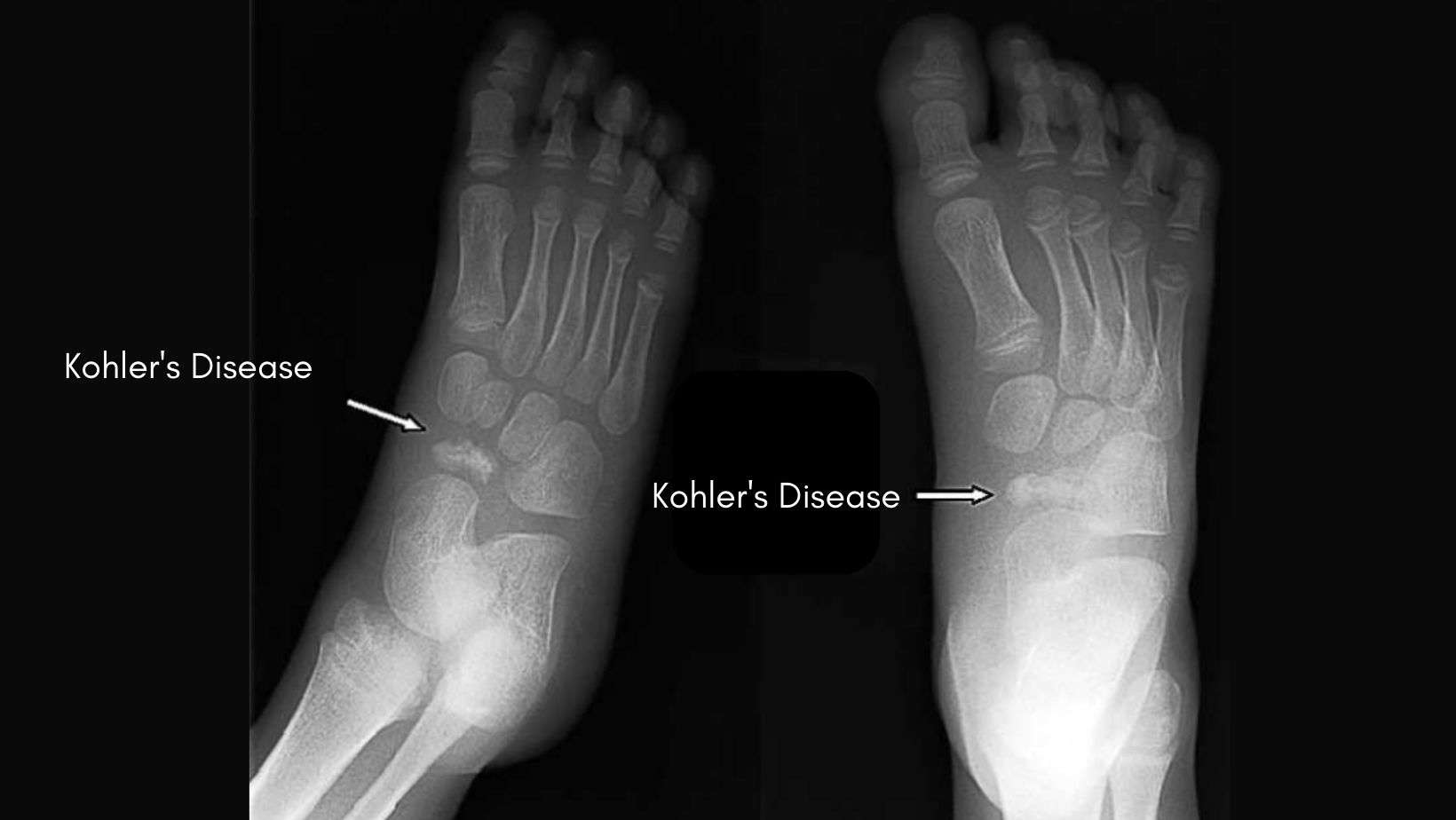Read More >
- Anterior Ankle Impingement - July 24, 2022
- Tarsal Coalition - October 12, 2022
- Sural Nerve Pain - October 3, 2022
Symptoms of Kohler’s Disease
Kohler’s Disease was first described by Alban Kohler in 1908, and it is a condition that affects the Navicular Bone, located on the medial arch of the foot. It occurs in children, commonly between the ages of 4-7, but can be found in children as young as 2 years old.
Kohler’s Disease is more common in boys than girls but can occur at a younger age in girls. Symptoms are mostly unilateral with up to 25% occurring bilaterally.
Patients often report pain in the inner aspect of their foot, they may limp when walking, and there is often visible swelling on the foot. There is pain on palpation of the foot’s medial arch, and running or hopping often worsens the pain.
Kohler’s Disease Causes
The exact cause of Kohler’s Disease is unknown, but we know it results from decreased blood flow to the Navicular bone, resulting in avascular necrosis.
The navicular bone is the last tarsal bone to ossify in girls 18 to 24 months and boys 30 to 36 months old.
While the aetiology of Kohler’s Disease is not fully understood, it is thought to be caused by the compression of the navicular bone by the surrounding ossified Talus and Cuneiform bones.


Diagnosis of Kohler’s Disease
A consultation with a Musculoskeletal Physician or a Paediatric Physical Therapist is recommended if you are suspicious of having Kohler’s Disease.
A clinical examination can identify the location of pain (commonly dorsomedial midfoot), and it should be complemented with an X-ray to achieve a clinical diagnosis.
The navicular will have standard avascular necrosis (AVN) characteristics on plain films, including sclerosis, fragmentation, and flattening.
Kohler’s Disease: Treatment
A Paediatric Physical Therapist is in an excellent position to offer appropriate treatment for Kohler’s Disease. In severe cases, the patient may be recommended a cast or walker boot period for 4-6 weeks until their pain has subsided. Initially, this may be non-weight-bearing that progresses to weight-bearing in weeks 4-6.
Upon removal of the walker boot, advice on the most appropriate supportive footwear is recommended. Strengthening exercises for the foot and ankle are recommended for muscular weakness that develops from the time spent in a boot.
For young patients with flat feet, insoles may be recommended alongside strengthening and stretching exercises.
The prognosis for Kohler’s Disease is excellent, with cases resolving within 3 months with treatment & self-resolving in most cases in up to 15 months.
Physiotherapy with James McCormack
This is not medical advice. We recommend a consultation with a medical professional such as James McCormack. He offers Online Physiotherapy Appointments weekly and face-to-face appointments in his Fulham clinic.
